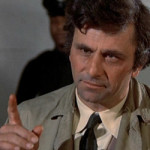Have you ever solved a puzzle, a riddle or problem and felt clever for doing so? Imagine that sensation at the end of a suspense-filled narrative, an epic series of mental exercises more enjoyable and page-turning than any logic puzzle. Murders are inherently dramatic—but shroud it in mystery and revenge and misplaced rage and you have something else entirely! Way before interactive fiction was a thing, authors were engaging readers and forcing them to use their minds to solve all matter of crimes.
The romanticized private eye, the charming beat cop, the overzealous defense attorney. No real-life job holds as much fictional potential for fantastic stories as the detective.
How to write them
http://www.standoutbooks.com/essentials-writing-murder-mystery/
Mysteries tend to follow a more rigid structure than other genres. Readers love picking up on subtle clues, discerning lies through contradictory testimonies, and deducing motivations. In order to sprinkle those clues and create those suspect interactions in a meaningful way, you as the writer have to already have the crime figured out completely. You need to figure out everything there is to know about whodunnit, howdunnit and whydunnit. In other words, you have to plot backwards.
Mr. Green (WHO) has a motivation to kill Mrs. White—she's blackmailing him for embezzling funds (WHY). He sets up a meeting to pay for her silence. Mrs. White gets poisoned after drinking some bad bourbon (HOW).
And there we have the very barebones framework of a mystery. But in order for there to be room for clues, witnesses and multiple suspects, several layers of complexity will need to be added.
Mr. Green has a motivation to kill Mrs. White—she's blackmailing him for embezzling funds. Mr. Green is a hedge fund manager for a bank, while Mrs. White is his secretary. Mr. White has had longtime suspicions of an affair between the two coworkers, even to the point of hiring a private detective to stalk her after work (RED HERRING). The bottle of bourbon is a rare type only able to be purchased overseas in Paris (Who was in France recently?). But the liquor is hardly at the forefront of the detective's mind—by all looks and appearances Mrs. White drowned herself in her backyard pool. (How do we link up a paralysis poison in the bourbon? What hints can the pool boy give us? Can she swim? Was she suicidal?)
The questions arise naturally! Keep answering them until there aren’t any left, and then start finding natural progressions (links) from one deduction to another. Fit in subtle foreshadowing to deductions yet unraveled. Add in an interesting detective with a personality and quirks of his/her own. The big ‘Aha!’ moment makes everything worth it.
Examples
 Danganronpa
Danganronpa
This is the game that prompted me to write this blog post. A visual novel with horror and mystery-solving elements along with some courtroom drama for good measure. Think Battle Royale meets Pheonix Wright. A classroom of oddballs are trapped within a school by a homicidal teddy bear, and the only way to get out? Kill someone and get away with it.
Every time someone dies an investigation occurs, and it’s up to our generic protagonist to piece it all together. The uniqueness of the cast, the inherent sense of betrayal as you doubtlessly grow attached to them—’Dang it Ron Paul’ is a wonderful implementation of murder mysteries in interactive fiction.
There can only be one truth! Every theater poor Conan visits, every mall and every sports stadium—is brimming with murder! Instead of seeking therapy, our intrepid teen-turned-boy (don’t ask) detective solves mysteries from the most esoteric of clues! The victim’s dying message was written in code, and when converted into kanji…contains puns that point to the very cherry blossom tree where the victim and murderer shared their first kiss!
Detective Conan is great for exploring almost every trope in the book, even if (after 500 chapters) the mysteries start getting formulamatic. There’s a reason why the series is still running strong, and that a new film gets released every summer in Japan.
The setup for Columbo episodes in unlike many you’ll see or be able to enjoy via text. In the ‘Reverse Whodunnit’, we the viewer are shown the murderer prepping his alibi and murder method all the way through to the murder itself, and all within the first ten minutes! This is mystery solving on easy mode, as we the viewers are made to feel clever as we see Columbo bumble his way through it. A sharp mind hides under the clowny cop, who uses his appearance as a blue-collared nitwit to outfox the foxes. It’s fun to watch Columbo annoy the murderer into submission!
Whether he looks like Robert Downey Jr. or Benedict Cumberbatch, Holmes is the quintessential private detective. Knowledge, deduction, and observation in particular—Sherlock is a master of all three elements a sleuth needs. We as readers are constantly reminded of his cleverness by reading from the perspective of the less wondrous Dr. Watson who serves as narrator. This approach adds to the mystique and suspense that we otherwise wouldn’t have from a 1st-person perspective of an incredibly logical man.
It’s a testament to Sir Arthur Conan Doyle that a century-old “consulting detective” remains the most impactful character on this genre and for the (no doubt) countless Hollywood and BBC adaptions to come.





Recent Comments